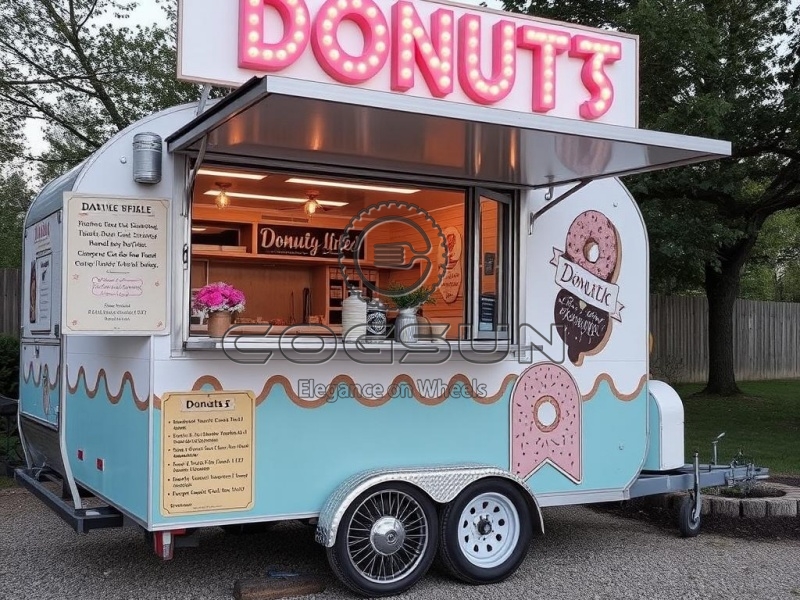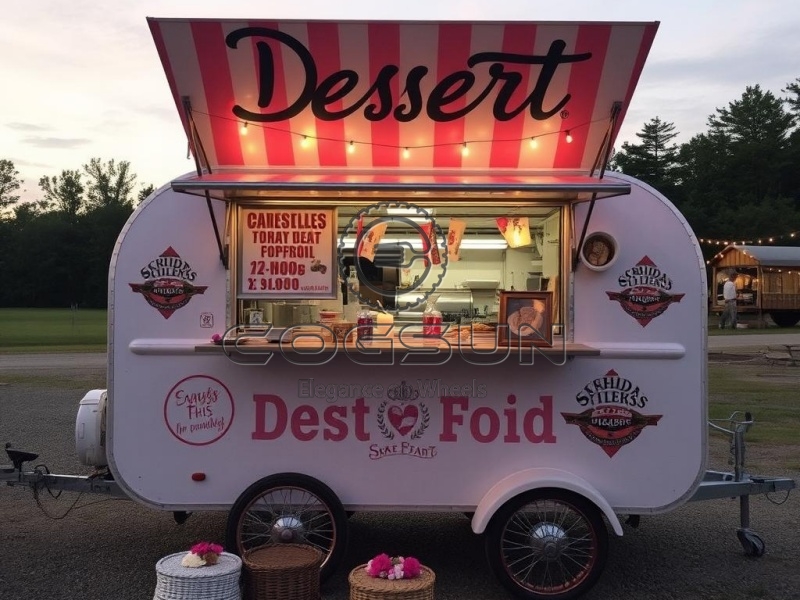Indian food trucks typically attract passersby with their vibrant paint jobs and eye-catching logos. Traditional motifs or deities are often painted on their trucks, conveying a rich cultural atmosphere. They roam city streets, commercial districts, university campuses, and large-scale events, offering authentic Indian flavors to the fast-paced urban population through a “stop-and-eat” experience. From butter chicken in the north to fish curry in the south, from crispy samosas to sweet and sticky gulab jamun, the truck menus encompass classic dishes from across India, catering to diverse tastes.

Core Features
1.Mobile Carriers of Cultural Symbols
- Indian food trucks are more than just dining venues; they are also cultural showcases. Through decor, music, and menu design, they integrate Indian religious, artistic, and culinary traditions into modern consumption, attracting locals and tourists alike to stop and experience them.
2.Affordable and Fast Service
- Compared to traditional restaurants, trucks offer lower operating costs, affordable menus, and fast service. Customers can enjoy steaming hot curry or naan in minutes, without having to make reservations or wait for a seat.
3.Flexibility and Community Engagement
- Trucks can adjust their stops to accommodate peak traffic and even participate in impromptu events like food festivals and concerts. Some truck owners even announce their locations in advance via social media to engage with their fans, fostering a unique “car-following culture.”
4.Sustainable Operations
- Many trucks use biodegradable tableware and optimize ingredient sourcing to reduce waste, aligning with modern consumers’ environmental concerns.
Interior Equipment
- Cooking Area: Built-in gas stove, pressure cooker (for quick curry cooking), griddle (tawa, for flatbreads like naan and roti).
- Storage Area: Refrigerated cabinets and insulated containers organize fresh ingredients and pre-made dishes, while spice racks neatly display dozens of spices, including turmeric, cumin, and chili powder.
- Processing Area: Multi-function vegetable cutters and blenders streamline ingredient preparation, and some trucks are even equipped with small dishwashers. Service
- Window: A transparent display showcases freshly prepared food, equipped with a POS terminal and mobile payment terminals, enabling contactless ordering.
- Sanitation System: Independent water tanks and wastewater collection devices ensure operational compliance.
Application Areas
1.Urban Dining
- During weekday lunchtimes, office workers line up for quick meal kits offered by trucks. At night, trucks become popular stalls at night markets, satisfying young people’s curiosity for exotic flavors.
2.Large Events and Festivals
- At music festivals, sporting events, or cultural exhibitions, Indian food trucks often serve as specialty dining areas, offering an immersive experience. For example, at the Coachella Music Festival in the United States, Indian food trucks became an internet-famous spot with their “Spice Bomb” menu.
3.Private Parties and Corporate Events
- Trucks can customize themed menus, providing exclusive catering services for weddings, birthdays, or company team-building events, adding excitement to the event.
4.Brand Collaborations and Cross-Border Marketing
- Some trucks collaborate with beer brands and film promoters to launch co-branded dishes or themed packaging to expand their reach. For example, we collaborated with craft breweries to launch a special drink called “Mango Lassi Beer”




